How waterproof is my phone? What IP ratings really mean.
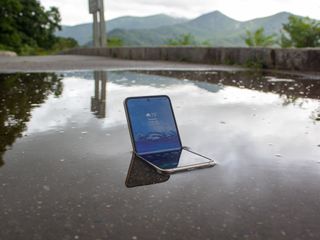
Best answer: IP ratings refer to the "International Protection Marking" ratings given after a series of tests were performed to see how much dust and water can enter your phone and under what circumstances. Each number and letter stands for a different level of protection, and the full list of them follows below.
Tougher phones
Manufacturers are making Android phones more rugged than they used to be. It's a big selling feature. Phones from Samsung, Motorola, and even Google now come with some degree of water- and dust-resistance. You can even pick from the best rugged Android phones. What those numbers represent are important deciding factors for many when spending cash on a new phone.
You'll usually see "ruggedness" described with an IP rating or a MIL-STD rating, or both. Those are standards (loose ones in some cases) that determine how resistant something is from the elements. Things like water-resistance, shock (both electrical and physical), temperature, air pressure, and a host of other natural ways just begging to ruin your phone.
The ratings and certifications were developed long before the invention of cellphones, and cover things like valves and electrical boxes. They now apply to phones and not just for the ones built like tanks. Let's break down each rating a little, so you know what they really mean.
Ingress protection
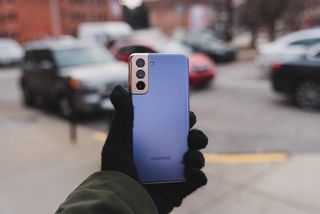
Ingress protection refers to the ability of a product to prevent foreign objects — specifically liquid and dust particles — from getting inside. And while we usually think the term IP stands for ingress protection, it actually stands for International Protection, as in an International Protection Marking.
Be an expert in 5 minutes
Get the latest news from Android Central, your trusted companion in the world of Android
The IP Code is designated by the initials IP followed by two digits and possibly a letter, like a K. Most letter designations are something we'll never encounter on small portable electronic devices; they refer to something that can withstand high-pressure, high-flow spray jets, like a car wash sprayer nozzle. Consumer electronics aren't built to withstand those conditions, but IP ratings cover more than consumer electronics, so they're part of the IP Marking.
Never run your phone through a car wash to test its IP rating. Seriously.
The digits each represent a resistance rating. The first number stands for the level of solid particle protection (dust). The second number stands for liquid ingress protection. A manufacturer doesn't have to test for both, but if it doesn't, the number will be replaced by an X to look something like IPX7 or IP6X. Here's how the numbers stack up.
Solid particle protection
| Solid IP number | How effective is it? |
|---|---|
| 0 | Not protected at all against any size particle. |
| 1 | Protected against particles larger than 50 mm. |
| 2 | Protected against particles larger than 12.5 mm(This is the minimum rating to protect against putting your finger into a thing). |
| 3 | Protected against particles larger than 2.5 mm. |
| 4 | Protected against particles larger than 1 mm. |
| 5 | Dust Protected: Dust must not enter in enough quantity to affect the normal operation. |
| 6 | Dust Tight: Dust can't enter, even in a vacuum. |
Liquid ingress protection
| Liquid IP number | How effective is it? |
|---|---|
| 0 | Not protected at all. |
| 1 | Protected against dripping water. |
| 2 | Protected against dripping water when tilted up to a 15-degree angle from its normal position. |
| 3 | Protected against spraying water when tilted up to a 60-degree angle from its normal position. |
| 4 | Protected against splashing water at any angle. |
| 5 | Protected against water sprayed from a 6.3 mm nozzle at 12.5 Liters/minute and 30 kPa (pressure) from three meters away for three minutes. |
| 6 | Protected against water sprayed from a 12.5 mm nozzle at 100 Liters/minute and 100 kPa (pressure) from three meters away for three minutes. |
| 6K | Protected against water sprayed from a 6.3 mm nozzle at 75 Liters/minute and 1,000 kPa (pressure) from three meters away for three minutes.(1,000 kPa is a standard amount of water pressure through a fire hydrant). |
| 7 | Protected against immersion in water up to one meter at normal pressure for 30 minutes. |
| 8 | Protected against immersion in water one meter or deeper at specifications detailed by the manufacturer. |
| 9X | Protection against water sprayed from high-flow and high-pressure jets at high-temperature.Water volume of 14 to 16 Liters/minuteWater pressure of 80 to 100 bar (up to 1,451 Psi)Water temperature of 80-degreesDistance of 0.10 to 0.15 meters. |
In addition, the IP Code has letter designations for additional protection. Like any K rating, you'll never see these on a phone, but I'm putting them here to be complete.
Additional protection designation
| Letter code | What it means |
|---|---|
| f | Oil-resistant |
| H | High voltage protection |
| M | Motion during any testing |
| S | No motion during any testing |
| W | Weather-resistant |
Yes, the "f" is not capitalized, and "weather-resistant" doesn't tell us anything at all. We didn't write the specification, though, so we're not sure why things were written the way they were.
That's all I need to know, right?
So when you buy a new phone with a rating of IP68, you can put it in a vacuum and dust can't get in, or let it sit in more than one meter of water forever, right? Nope.
Phones sent to a testing lab passed. Yours might not.
The dust protection rating leaves zero wiggle room. IP68 means dustproof under any conditions a human being can be in. The liquid ingress protection of 8 is "specified by the manufacturer," and you'll need to know what that specification is. Samsung, for example, says, submersion up to 5 feet for up to 30 minutes.
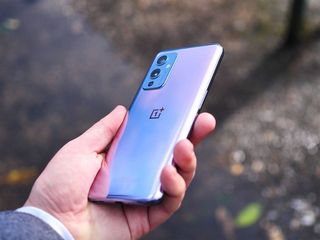
Cool, let's play with it in the bathtub and take videos of a rubber duckie versus GI Joe Wetsuit Frogman battle royale. This will be epic.
Not so fast. Samsung also says your device is not impervious to water damage in any situation, which is a total buzzkill. Samsung is not alone here or any sort of bad guy — almost every electronic device will include wording in the warranty or user manual that says it is not covered against water damage or abuse even if the device in question is rated with an IP rating.
This is because the devices used for testing and certification could withstand dust intrusion under any circumstances up to and including a vacuum and immersion in water 5-feet deep for a half hour. Your phone might not. The certification facility can't test every phone. The people who made it should be willing to talk about the warranty if you have an issue, though.
MIL-STD
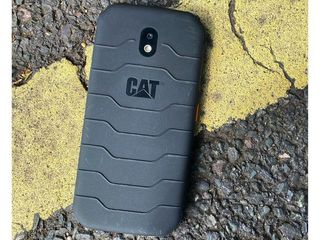
This is a U.S. Military standard that specifies how something will fare against the environment during its lifetime. Android phones, watches, and other electronics often carry the MIL-STD 810G certification, which means it was tested in a lab under conditions that simulate a gigantic list of environmental variables and still worked. Some of the things that are tested include temperature extremes, altitude, thermal shock, fungal ingress, and being frozen solid. It's an exhaustive list, and if your phone passed these tests, you could expect it to survive anything, including a week with Bear Grylls, right?
Nope.
This certification can be completely meaningless. For starters, the testing procedures clearly state that a manufacturer only has to test in simulated environments, which doesn't mean it will withstand the real thing. If that's not enough of a red flag, the fact that whoever does the testing gets to decide how anything is simulated and that the thing being tested doesn't even need to pass, only be tested should be. And feel free to see what happens to a phone with a battery when you freeze it and then thaw it out.
Dr. Conrad H. Blickenstorfer, Ph.D. explains it perfectly while discussing MIL-SPEC standards for laptops.
The MIL-STD-810G does not mandate standards or set minimum goals for the various tests; for the most part, it simply describes how testing is to be conducted. This leaves considerable room for interpretation. So it's important for manufacturers of rugged notebooks to provide detailed information on what tests were conducted, how exactly they were conducted, what the results were, and what those results actually mean. The claim that a product is "MIL-STD-810G tested" is insufficient, and prospective customers should ask for more details.
Saying something is MIL-STD 810G tested without providing a copy of the testing parameters and results means the same thing as "feels faster" or "excellent camera." Never think your electronic device will withstand these sorts of conditions unless you've seen the testing parameters and results.
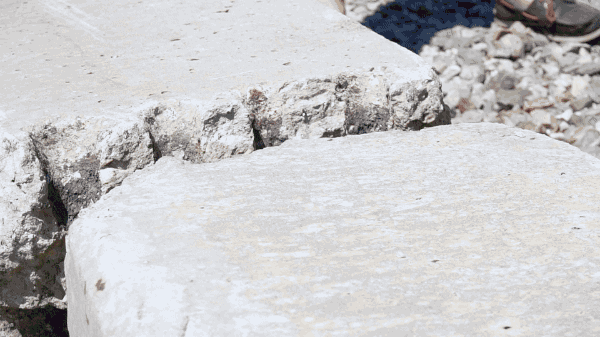
Seeing IP numbers and Military toughness ratings on a phone you buy is generally a good thing. Not all individual devices will pass all real-life testing, but someone, somewhere, decided it should be a little tougher than normal.
Having an IP-spec phone is great protection against accidents like spilling water or using it in a woodshop, and a MIL-STD 810G phone will probably fare an icy snowbank or fungal garden better than one without. Just remember, taking your phone scuba diving or spelunking just might mean time spent with a different phone while you discuss your warranty options.

Jerry is an amateur woodworker and struggling shade tree mechanic. There's nothing he can't take apart, but many things he can't reassemble. You'll find him writing and speaking his loud opinion on Android Central and occasionally on Threads.